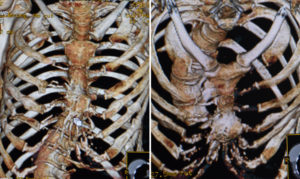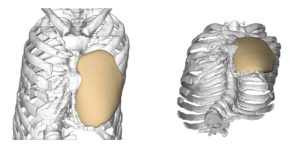Background: Precuts excavatum or funnel chest is a well known congenital chest wall deformity. It affects the midline sternum and the adjoining ribs which is expressed in a sunken appearance to the chest most commonly seen down the middle. Various expressions of pectus excavatum exist where one side is more affected than the other resulting in chest wall asymmetry as well.
Surgical treatment of pectus excavatum has evolved over the years with the Nuss procedure using a pectus bar as the most contemporary method. But it does not always provide a complete correction since it relies on an outward pressure or push by the underlying bar. Residual chest wall deformities do remain in some treated particularly when done in older patients.
In adults with residual chest wall deformities secondary procedures exist such as pectoral implants in men and breast implants in women. While most effective in more symmetrical chest wall deformities, the asymmetrical chest wall deformity is more challenging with secondary implant camouflage.
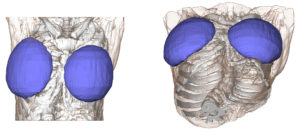
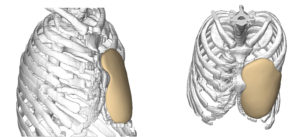
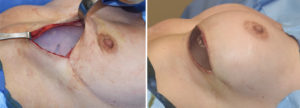
With significant chest wall asymmetry from pectus excavatum and its subsequent repairs, a custom chest wall implant can restore the chest wall shape. This serves as a platform onto which to place a breast implant in women or incorporate it into a custom sterno-pectoral implant for men.
Highlights:
1) Pectis excavatum and its subsequent repairs can still leave residual chest wall deformities.
2) In females breast implants alone can often not adequately camouflage a chest wall deformity.
3) A custom chest wall implant can serve as as foundation onto which a breast implant can be placed.
Dr. Barry Eppley
Indianapolis, Indiana



